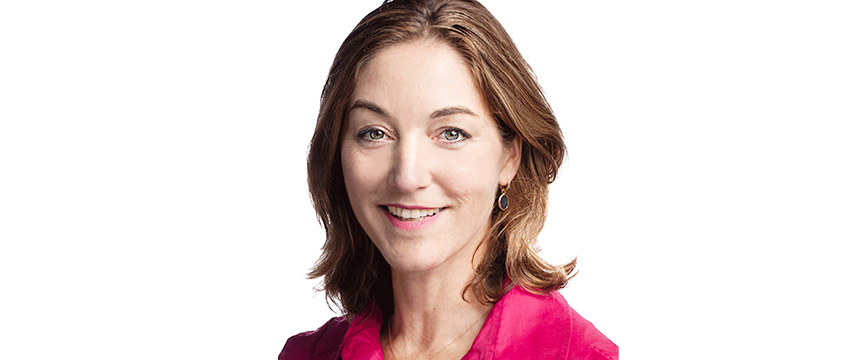U+I places community at forefront of plans
Last November, regeneration specialist U+I set itself some ambitious targets. It was going to reset the public private partnership initiative. It was going to improve the reputation of the PPP and of developers and it was going to deliver best practice while doing so.
To do that, it said it would establish an independent community challenge panel, led by a new non-executive director, to monitor and police best practice across its schemes, to hold it to account and to make sure it continually did better.
Last week, it appointed founder of architecture firm dRMM, Stirling Prize winner and design chair for HS2 professor Sadie Morgan as that non-executive director and the holder of the mirror against the face of U+I and its ambitious commitments.
Last November, regeneration specialist U+I set itself some ambitious targets. It was going to reset the public private partnership initiative. It was going to improve the reputation of the PPP and of developers and it was going to deliver best practice while doing so.
To do that, it said it would establish an independent community challenge panel, led by a new non-executive director, to monitor and police best practice across its schemes, to hold it to account and to make sure it continually did better.
Last week, it appointed founder of architecture firm dRMM, Stirling Prize winner and design chair for HS2 professor Sadie Morgan as that non-executive director and the holder of the mirror against the face of U+I and its ambitious commitments.
EG caught up with Morgan and U+I chief executive Matthew Weiner to find out more about their partnership and how the real estate community can reset its reputation around PPPs.
“We are curious people and we started with a question,” says Weiner, “which was if you asked people whether the public sector should use their land to deliver more housing, you got a thumbs-up.
“But when you ask whether the public sector should use their land in conjunction with the private sector to deliver more housing you definitely got the thumbs-down. That interested us.”
For Weiner and U+I it was this thumbs-down that reflected the need for the development industry to do something. And, specifically, for U+I to do something.
[caption id="attachment_976107" align="alignright" width="150"] Matthew Weiner[/caption]
“We want to hold ourselves to a clearer set of commitments about how we engage, how we measure those commitments and whether or not we’ve been successful, so we can go back and learn each time to be better at both engagement and the process,” says Weiner.
And it is here that Morgan and her mirror-holding comes in. Her role as part of the community panel will be to ensure U+I is responsible and accountable for its actions.
“The reality is, if you hold the mirror up and you reflect on what you see then the next time you will be better because of it,” says Morgan.
“I think so few people learn those lessons from both positives that have happened in the past or from the negatives that happened in the past.”
Both Weiner and Morgan agree the industry is suffering from a massive breakdown in trust, that its reputation has been affected and that there is an overwhelming need to rebuild the trust.
And for Morgan, there is a need for the industry and those on the outside looking in, to understand the vital role it has to play in the delivery of functional, sustainable and safe communities.
We want to hold ourselves to a clearer set of commitments about how we engage, how we measure those commitments and whether or not we’ve been successful
“I deeply believe the built environment is so fundamental to so many things that affect our lives,” says Morgan.
“It is such a powerful tool and can help communities thrive in a sustainable and lasting way. If it is not done properly and done well then it really does lead to fractured society. If you look at the terrible knife crime or all the things that are happening in our society today, it is because of a breakdown of communities.”
She adds: “If we can’t build communities by building a built environment that encourages community, encourages safe places for kids to be, good light, good space, good connectivity, ability to meet your friends, ability to meet your neighbours, then we’re doing society a disservice because we’re not making places where communities thrive.”
The ambitious targets that U+I set itself include sharing any profit it makes above an agreed projected return with its public sector partner and directly with the community and the establishment of a community engagement fund to enable community organisations to be better equipped to take part effectively in the planning process.
Putting community and people at the heart of regeneration projects over and above profit is an about-turn for the property industry, although few would likely admit it.
Except perhaps for Weiner.
“Ten years ago I would have said all that matters is profit and that projects deliver the profit and the people are a secondary element to that,” he says frankly.
“I could not have been more wrong. It took me quite a long time to work out that it is people who deliver and that if our people are working on great projects then the natural consequence of those will be profit in its widest definition – for the community and to our shareholders.”
It is a refreshing sentiment and one that is starting to echo through the development industry as, one by one, they hold the mirror up to their faces.
Whether the reflection will change for the better in the eyes of the communities being developed is still unknown, but with developers such as U+I bringing in independent directors to hold them to account, it seems the first steps to rebuild trust and improve reputation are being taken.
To send feedback, e-mail samantha.mcclary@egi.co.uk or tweet @samanthamcclary or @estatesgazette











